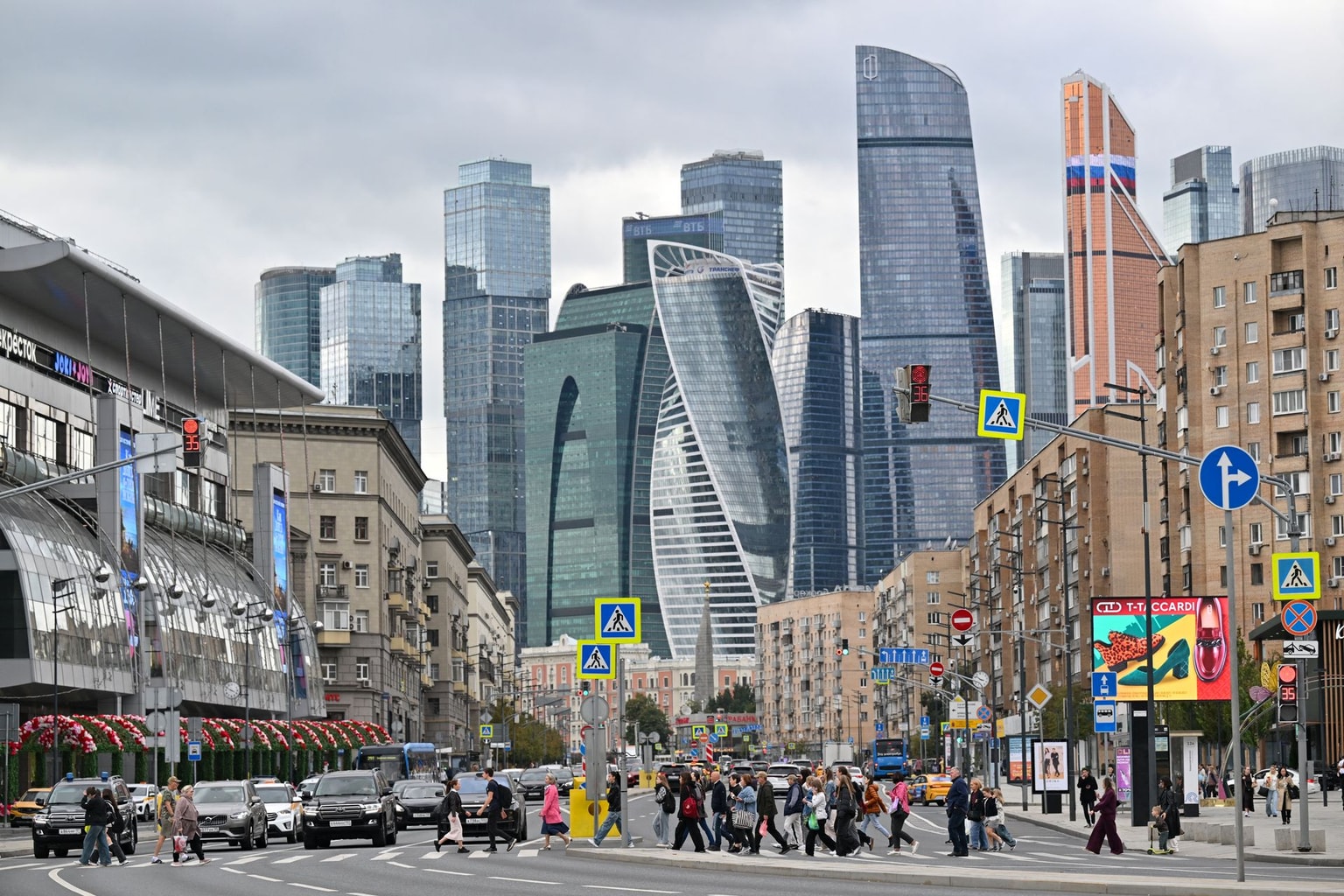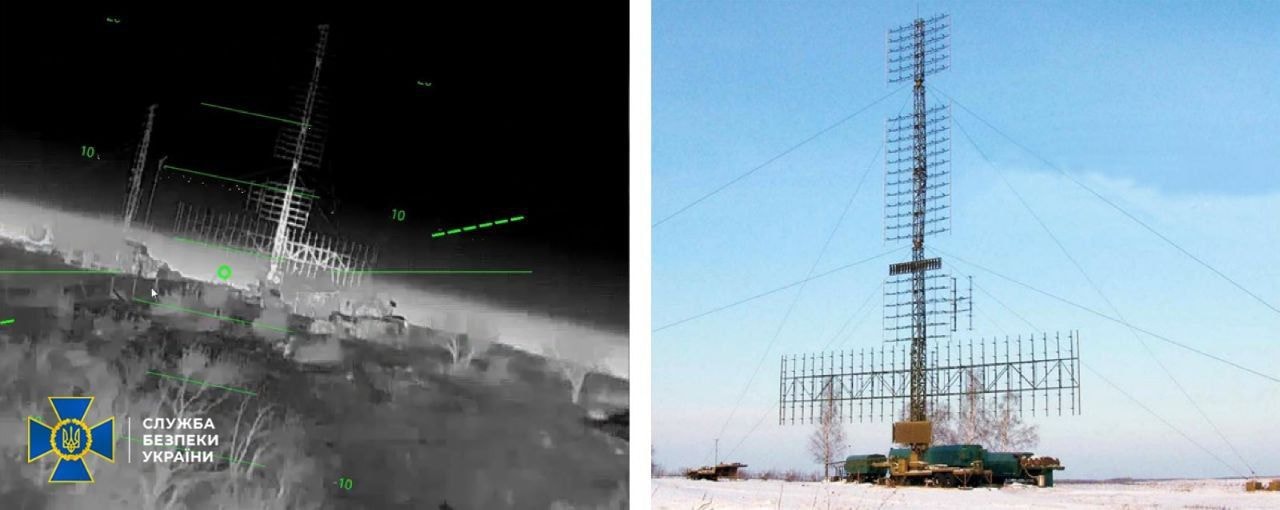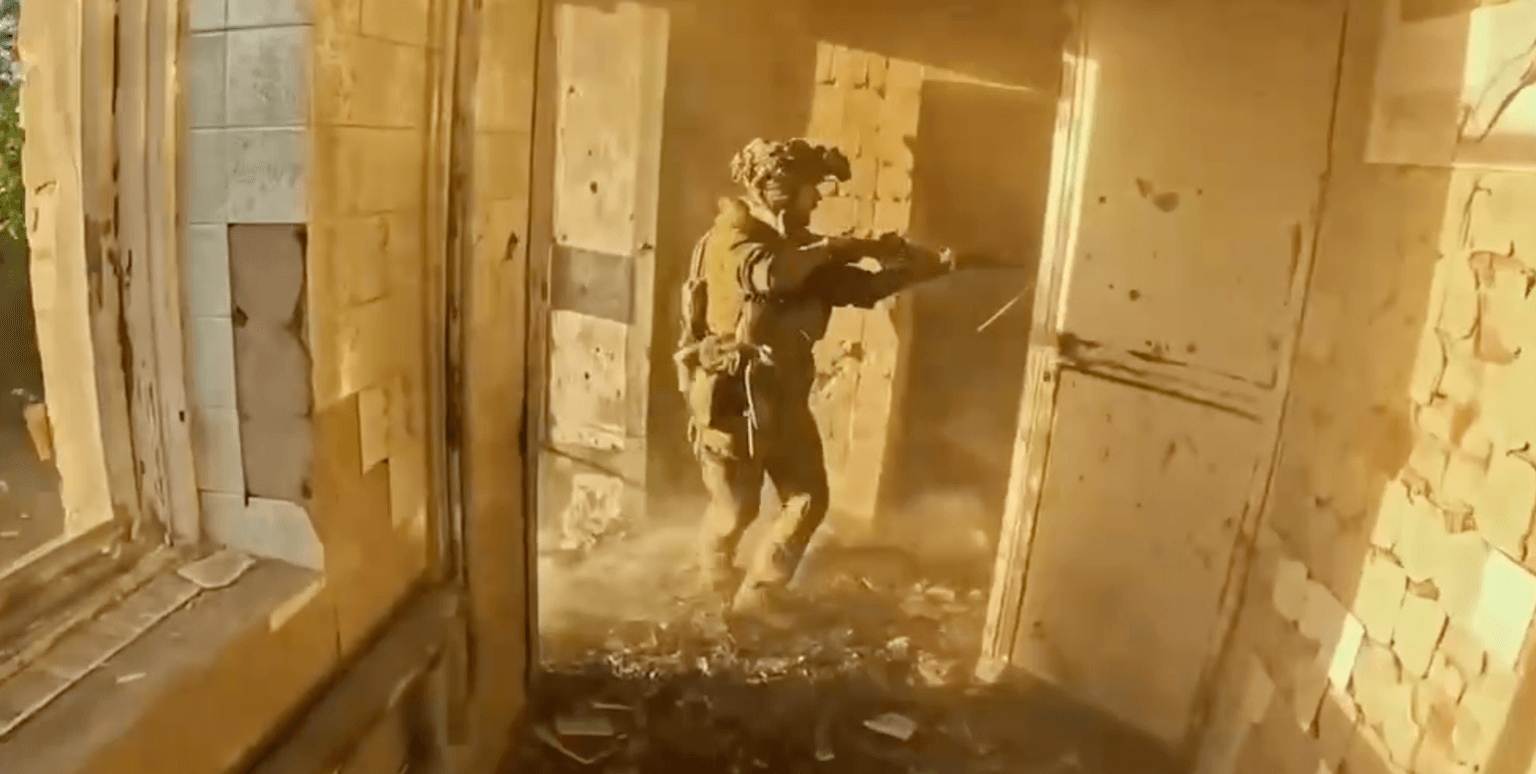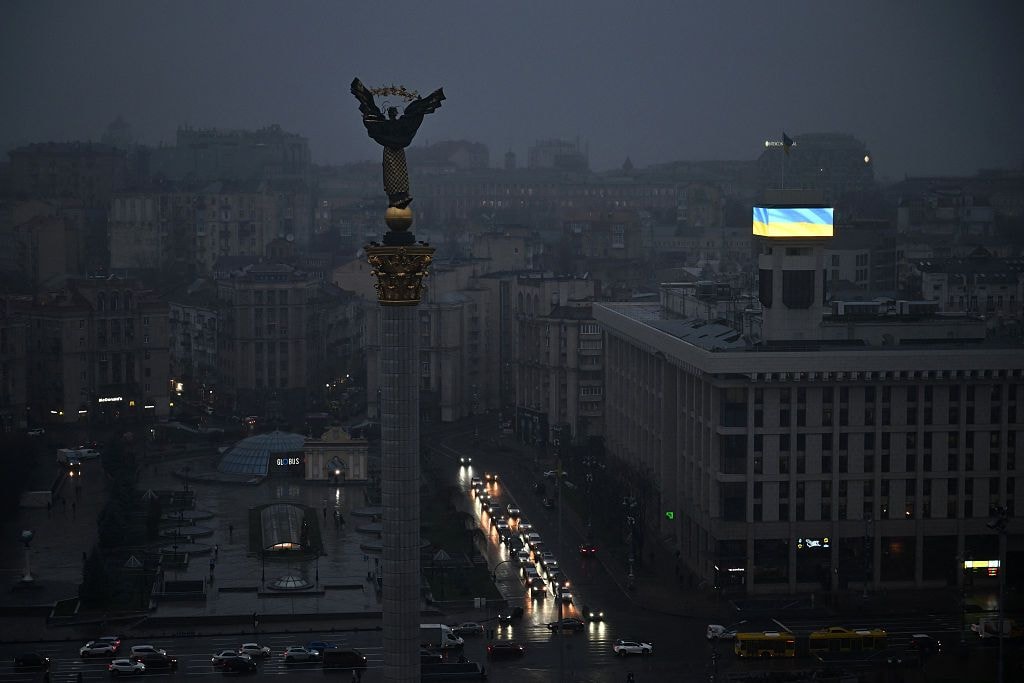
Russia turns sound into weapon
Civilians carry a dog and belongings after a Russian ballistic missile strike on the city center in Kyiv, Ukraine, on Dec. 20, 2024. (Vlada Liberova/Libkos/Getty Images)
When I was at school and learned about World War II, my grandmother told me what she remembered of her wartime childhood on the English coast. Growing up near a Royal Navy base, she survived countless nighttime air raids.
Most of all, she remembered exactly how the Blitz sounded — the sirens, the terrifying throb of German aircraft overhead, the whistle of bombs, and the eventual explosions that ripped into her hometown night after night.
In Kyiv, in 2025, Russia provides a different sort of sensory experience.
There are no Russian bombers above the sky of Ukraine’s capital — they launch their missiles from hundreds, if not thousands, of kilometers away. But I do hear Russia’s deadly Shahed-type drones, waves of which Russia regularly sends to the Ukrainian capital under the cover of darkness.
These aren’t the small, first-person view drones used on the battlefield or against cities near the front. The drones in the sky above Kyiv have a wingspan of around 3 meters, and they sound more like lawnmowers or mopeds (as Ukrainians colloquially call them).
Shaheds typically start to approach Kyiv after sunset, and attacks sometimes last until sunrise. This means that the terror inflicted on a city of over three million people is primarily an audio experience, rather than visual. I’ve never seen a Shahed, but I’ve learned, unwillingly, to recognize the sound from various distances. I’ve also learned how different types of air defense sound, from deep, far-off booms on the other side of the Dnipro River to automatic gunfire from the back of trucks on the street below my apartment.
After a while, you use decibels as a basis for understanding how much danger you’re in.
If a Shahed drone gets too close, I hear its buzz rise to a nauseating pitch. Then, if I’m very unlucky, the noise screeches until what sounds like the engine cutting out. Silence for a heart-stopping second. Then the blast. I text my friends in different parts of the city to compare what we’ve just heard — “That one seemed loud, right? Was it downed, or did we hear a hit?”
In the morning, in a sleep-deprived state, we notice a sensitivity to everyday sounds. It could be the whir of an electric car engine accelerating, or the buzz of an automatic parcel locker, as one friend mentioned to me. It’s not just the sound of drones that can put people on edge, either. A few weeks back, one of the first summer storms came to the skies above Kyiv. Social media was full of posts about how the reverberation of the thunder sounded like an extended missile explosion. “Don’t worry, it’s just the sound of Zeus at work,” some people joked.
When I’m outside Ukraine, the acoustic impact of war becomes even more absurd. In London, I once paused a conversation to listen to a train going over the tracks in the distance because it sounded uncannily like the rhythm of automatic gunfire of air defense units around Kyiv. At a concert, I noticed that the rising chords of a synthesizer echoed the whining notes of Ukrainian air raid alarms. A heavy truck driving by at high speed can rattle window frames in the exact same way an explosion from a ballistic missile does.
Of course, the associations created by everyday noises are far worse for my colleagues who work on the front line. Someone moving heavy outdoor furniture on a concrete patio sounds, for a moment, like outgoing artillery fire. A sudden beep of a car horn can trigger a flinch. Hearing a tourist’s drone filming what will become happy vacation memories can provoke an automatic duck-and-cover response.
In my work, I try to find ways to communicate the importance of Russia’s war against Ukraine to our readers, the vast majority of whom are not in Ukraine and have never experienced this kind of war. But sometimes, it’s difficult to convey the reality on the ground through news articles and facts when much of Russia’s strategy against civilians seems to be designed to create a sensory overload.
I remember reading articles about the power cuts of the winter of 2022-2023, and how the hum of generators took over the streets of Ukrainian cities. It was only when I came to Kyiv in 2024, however, and experienced a summer of power cuts after Russia destroyed nearly all of Ukraine’s power grid in spring that I truly understood what this “hum” meant in reality.

When nearly every business was forced to use a generator to stay open, there were few places you could comfortably sit outside after work. It’s easy to take for granted now, but there were parts of Kyiv where you couldn’t hold a conversation on the street with a friend. Amid a heat wave, there was no electricity for air conditioning, but you couldn’t leave your window open for long before the sound (and smell of diesel fumes) made it unbearable. If you walked to work, your thoughts were drowned out by the omnipresent vibrations.
The news at the time largely reflected the economic damage of Russia’s attacks on Ukraine’s energy infrastructure (and fears for a winter without power), but I remember how the constant attack on your senses began to chip away at morale. When a rolling blackout ended, and the power came back, I felt immediate relief that there would be a few hours of silence before the generators were turned on again.
The point is to intimidate Ukrainians not just through sheer violence (these attacks regularly kill people in their homes), but also through the noise of constant bombardments.
The impact on your hearing is very much an intended side effect of Russia’s more general campaign of terror. There’s little military advantage to waves of Shaheds direct at Kyiv. Most are downed by Ukrainian air defense units, but that doesn’t spare civilians from the terrifying sound of hours of explosions for the entire night. The point is to intimidate Ukrainians not just through sheer violence (these attacks regularly kill people in their homes), but also through the noise of constant bombardments.

It can be hard to sleep when you have a noisy upstairs neighbor. Now, imagine that neighbor is Russia, and it’s sending weapons that buzz and bang all night on purpose. It’s an effective form of psychological warfare, if you can ensure an entire city spends the next day sleep deprived, low in energy, and sensitive to the smallest of sounds.
I do not wish that those outside Ukraine start to associate everyday noises with deadly weapons. But understanding what the war sounds like in Kyiv might help others comprehend what kind of enemy we are dealing with, and the sound of terror that millions of civilians are forced to live with.
One of my colleagues regularly wears a hoodie with the words “Russia is a terrorist state” on the front — it’s no coincidence that this is someone who has become particularly sensitive to sound.
Editor’s Note: The opinions expressed in the op-ed section are those of the authors and do not purport to reflect the views of the Kyiv Independent.










